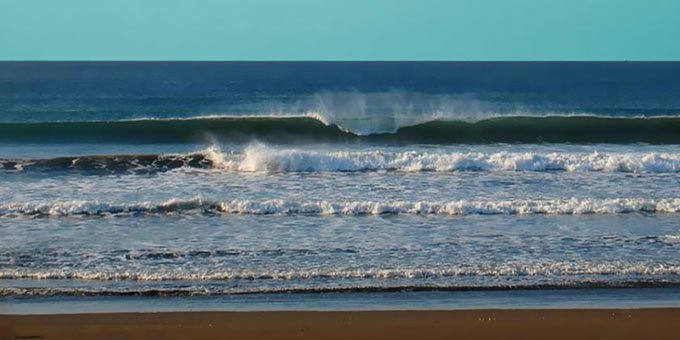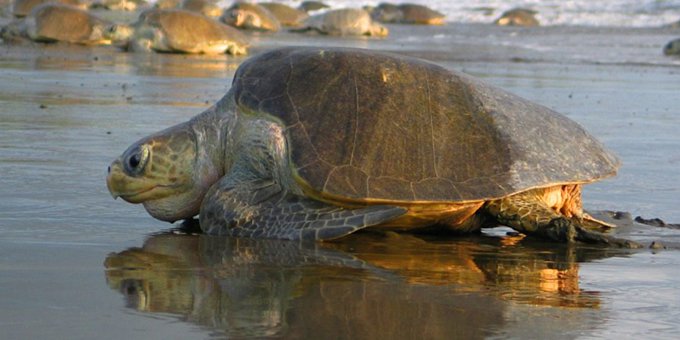
Nestled in the pristine wilderness of northwest Costa Rica's Nicoya Peninsula, the Camaronal Wildlife Refuge emerged in 1994 as a haven for the remarkable sea turtles that grace its shores with their presence during nesting season, which unfolds from June to January. Hidden away from the well-trodden paths, this sanctuary finds its closest companions in the charming towns of Carrillo and Samara, drawing travelers seeking both the tranquility of secluded beaches and the awe-inspiring spectacle of nesting sea turtles.

Spanning 234 hectares or 578 acres, Camaronal Refuge gracefully spans from sea level to 5 meters (0 to 16 feet) in elevation, offering an enchanting blend of beach and river habitats. While it may lack traditional hiking trails, the refuge invites visitors to embark on soul-soothing beach walks. As the sun dips below the horizon, a guide becomes an essential companion, illuminating the nocturnal world of the refuge.
However, it's the turtles that truly steal the limelight in this sanctuary. Most nights, between May and November, the sands come alive with the gentle arrival of nesting turtles. Their choice of nesting grounds includes the Olive Ridley, Leatherback, Hawksbill, and Pacific Green Turtles, each leaving behind a precious legacy in the form of eggs carefully laid in the sand. Beyond the nesting season, the turtles continue their timeless ritual, albeit less predictably. To safeguard these treasures, a dedicated hatchery stands watch, where volunteers nurture the eggs during their incubation period, ensuring their safe journey into the world.

Managed with unwavering dedication by the Costa Rican government, Camaronal Wildlife Refuge opens its gates from 6 AM to 6 PM daily, with the option for nighttime turtle nesting tours guided by park experts. After nightfall, beach access becomes a guided experience, offering a rare glimpse into the turtle's world. The refuge's ranger station provides essential facilities, including public restrooms, ensuring your comfort during your visit. A modest entrance fee of $12 per person supports the refuge's vital conservation efforts. While overnight accommodations are not available within its bounds, camping and fishing are permitted for those who wish to connect with nature on a deeper level. Most travelers find their retreat in the inviting hotels of nearby Samara and Carrillo, a testament to the refuge's harmony with its surroundings.
Here at Camaronal Wildlife Refuge, nature's rhythms dictate the ebb and flow of life. Whether you're drawn by the promise of secluded beaches or the enchantment of nesting turtles, this sanctuary stands as a living testament to the delicate dance between humanity and the natural world. Come, let the sands whisper their tales and the turtles paint the night with wonder at Camaronal.
Region: Northwest Costa Rica on the Nicoya Peninsula
Closest town: Samara
Size in hectares: 234 (578 acres)
Year established: 1994
Elevation in meters: 0 – 5 (0 -16 feet)
Private managed: no
Government managed: yes
Rangers station: yes
Overnight facilities: camping
Public restrooms: yes
Entrance fee: $12pp
Days: daily
Hours: 06:00 - 18:00 - guide required at night
Hiking trails: no
Boat tours: no
Average temperature range in Fahrenheit: 70 - 90
Average yearly precipitation in millimeters: 2,000 (79 inches)
Habitat: beach, river
From San Jose, take Rt. 27 west all the way to the end where it meets Rt. 1. Take Rt. 1 northwest until you reach Limonal. Turn left on Rt. 18 west and follow all the way to Rt. 21. Turn right on Rt. 21 and follow until you reach Nicoya. Turn left on Rt. 150 south and follow to Samara. Turn left on Rt. 160 and then follow it through Carrillo and then turn right at the fork to Playa Camaronal. This route has steep, muddy inclines and requires crossing a river. In the rain season, you will have to take the log route, bypassing the previously mentioned turn to Camaronal as the river will be too high. To do so, continue to Estrada Ravago and then turn right, following signs to Punta Islita, which is near the refuge.
Camaronal is located in a transitional area between the rainforest and tropical dry forest. Day time temps are usually in the upper 80s to lower 90s and nighttime temperatures are usually in the mid-70s. The refuge receives an average of 2,000 mm or 79 inches of rain annually. The driest months are December through August.
Visitors should pack a bathing suit, towel, shorts, tee shirts, appropriate shoes, rain gear, sun block, and insect repellent.
Fun Fact: Camaronal Wildlife Refuge has a turtle release program that releases baby turtles most nights.
Latitude: N 9° 51' 49.49"
Longitude: W 85° 26' 40.02"
Unsure of what to do? Let us make you a free custom trip plan!